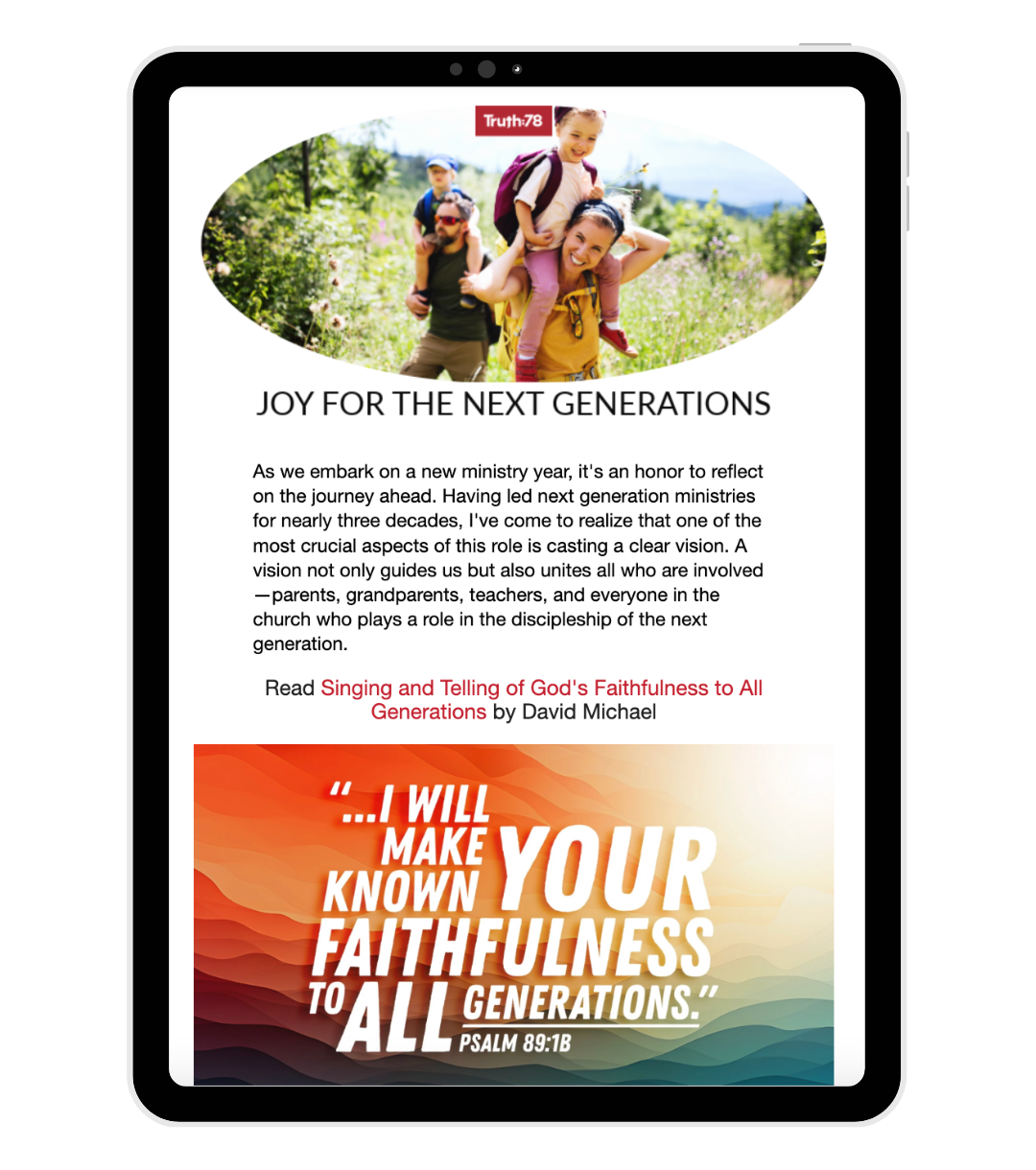A while back, I sat with my two oldest grandchildren flipping through a family photo album of one of our early family camping trips to Wyoming. As we paged through the pictures amidst a flood of wonderful memories, my grandchildren were fascinated by the adventures their mommy experienced as a young girl. I am so thankful to have that photo album.
What child doesn’t love to look at old family pictures? Now imagine your child having a “theological picture album” filled with truths about God: His faithfulness in keeping His promises; His sovereign providence over all things; His glorious deeds and the wonders He has done; a step-by-step presentation of the gospel; a child-friendly explanation of the essential doctrines of the Christian life; and on and on.
This is exactly what the Truth78 curriculum workbooks, notebooks, and journals are all about—creating a lasting, “theological picture album” for your children and students. They are not merely busywork or fun engagement for the students but are designed to reflect the core truths taught throughout each study. They invite children to interact with Bible texts, provide activities that reinforce the main ideas, ask questions for personal reflection and, most importantly, are an integral part of the classroom Small Group Application time.
Workbooks, notebooks, and journals are a key component of the curriculum because:
- They enhance the application process. Students are encouraged to move from head knowledge to heart application—responding to the truths they’re being taught in each lesson. (In our Revised curricula, students need workbooks notebooks, or journals in order to complete certain portions of the application section.)
- Workbooks for younger children provide opportunities for “hands-on” activities—coloring, pasting, adding stickers, etc. This helps students to focus as the adult leader reviews key lesson themes and leads the discussion time.
- Notebooks and journals for older students provide them with a variety of opportunities for notetaking during the lesson, small group and individual activities, personal application, and further study.
- They ensure that every student receives a summation of the entire curriculum, even if they have missed weeks of class.
- They provide parents a helpful tool for the ongoing discipleship of their children.
Churches and parents, don’t miss out on this opportunity to provide your students and children with workbooks, notebooks, and journals. (If you purchase the digital versions, consider having the printouts spiral-bound to keep all the pages together in a format that will last.) Imagine years from now, sitting down with your now older children and, page by page, reflecting on the redeeming work of Jesus on their behalf in Jesus, What a Savior. Or think of the awe and wonder of recalling God’s attributes in The ABCs of God: “God is Almighty, Bountiful, Creator, Deliverer, Eternal, Faithful, etc.” When hardship strikes your family, consider the comfort of pulling out the workbook from Faithful to All His Promises and, page by page, remembering, reflecting, and being encouraged by the unshakable promises of God to His children.
With all these benefits, it’s also important to note that, although the workbooks, notebooks, and journals add an additional cost, they are the only consumable part of our curricula (and cost not much more than a fast-food value meal). So don’t miss out on the opportunity to provide your students and children with a “theological photo album” for their lasting enjoyment.







